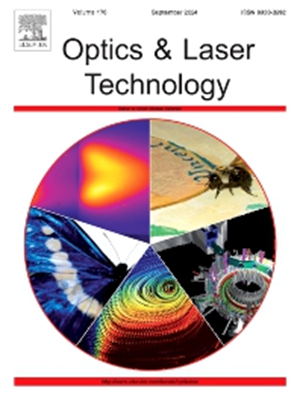Assembling magneto-optical heterostructures for all-optical multi-functional devices
IF 4.6
2区 物理与天体物理
Q1 OPTICS
引用次数: 0
Abstract
All-optical computing has recently emerged as a vibrant research field in response to the energy crisis and the growing demand for information processing. However, the efficiency of subwavelength-scale all-optical devices remains relatively low due to challenges such as back-scattering reflections and strict surface roughness. Furthermore, achieving multifunctionality through the reassembly of all-optical structures has thus far been rarely accomplished. One promising approach to address these issues is the utilization of one-way edge modes. This work proposes four types of deep-subwavelength (, where is the wavelength in vacuum) all-optical functional devices based on yttrium iron garnet (YIG): a phase modulator, a filter, a splitter, and logic gates. These devices are based on robust one-way edge modes and/or index-near-zero (INZ) modes but do not require an external magnetic field, which can allow for flexible assembly. In particular, a phase modulation range spanning from to , a perfect filter that divides the input port’s one-way region into two output one-way regions with equal bandwidth, a multi-frequency splitter with an equal splitting ratio (e.g., 50/50), and self-consistent logic gates relying on INZ modes are investigated. Our findings may find applications in compact optical calculations and integrated optical circuits.

求助全文
约1分钟内获得全文
求助全文
来源期刊
CiteScore
8.50
自引率
10.00%
发文量
1060
审稿时长
3.4 months
期刊介绍:
Optics & Laser Technology aims to provide a vehicle for the publication of a broad range of high quality research and review papers in those fields of scientific and engineering research appertaining to the development and application of the technology of optics and lasers. Papers describing original work in these areas are submitted to rigorous refereeing prior to acceptance for publication.
The scope of Optics & Laser Technology encompasses, but is not restricted to, the following areas:
•development in all types of lasers
•developments in optoelectronic devices and photonics
•developments in new photonics and optical concepts
•developments in conventional optics, optical instruments and components
•techniques of optical metrology, including interferometry and optical fibre sensors
•LIDAR and other non-contact optical measurement techniques, including optical methods in heat and fluid flow
•applications of lasers to materials processing, optical NDT display (including holography) and optical communication
•research and development in the field of laser safety including studies of hazards resulting from the applications of lasers (laser safety, hazards of laser fume)
•developments in optical computing and optical information processing
•developments in new optical materials
•developments in new optical characterization methods and techniques
•developments in quantum optics
•developments in light assisted micro and nanofabrication methods and techniques
•developments in nanophotonics and biophotonics
•developments in imaging processing and systems

 求助内容:
求助内容: 应助结果提醒方式:
应助结果提醒方式:


